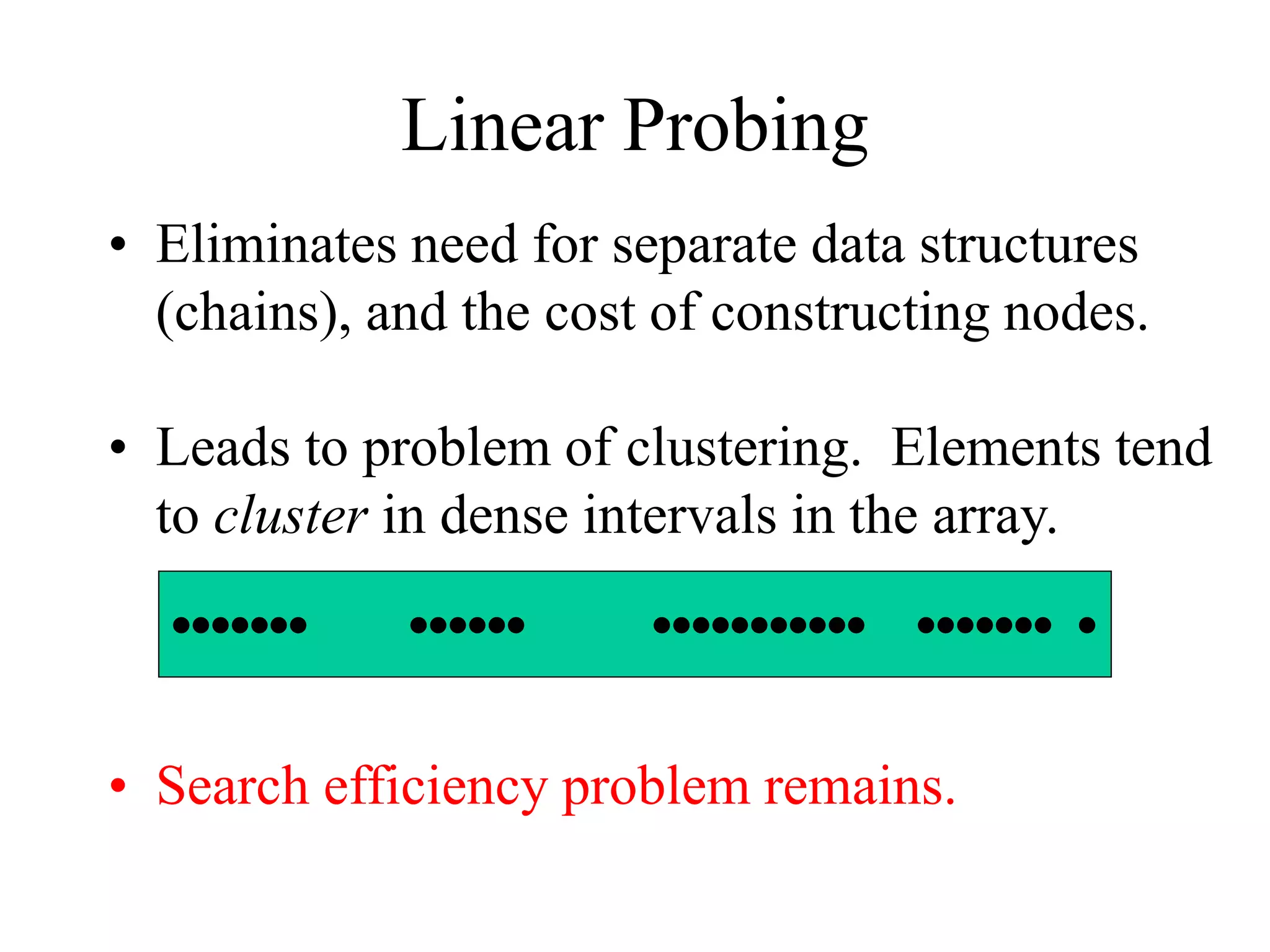The document discusses different approaches to handling collisions in hash tables: chaining and open addressing such as linear probing. Chaining involves storing collided keys in linked lists at each array index, while linear probing resolves collisions by probing subsequent indices in the array. The example demonstrates linear probing by inserting several keys into a hash table and showing the array indices where each key is stored.


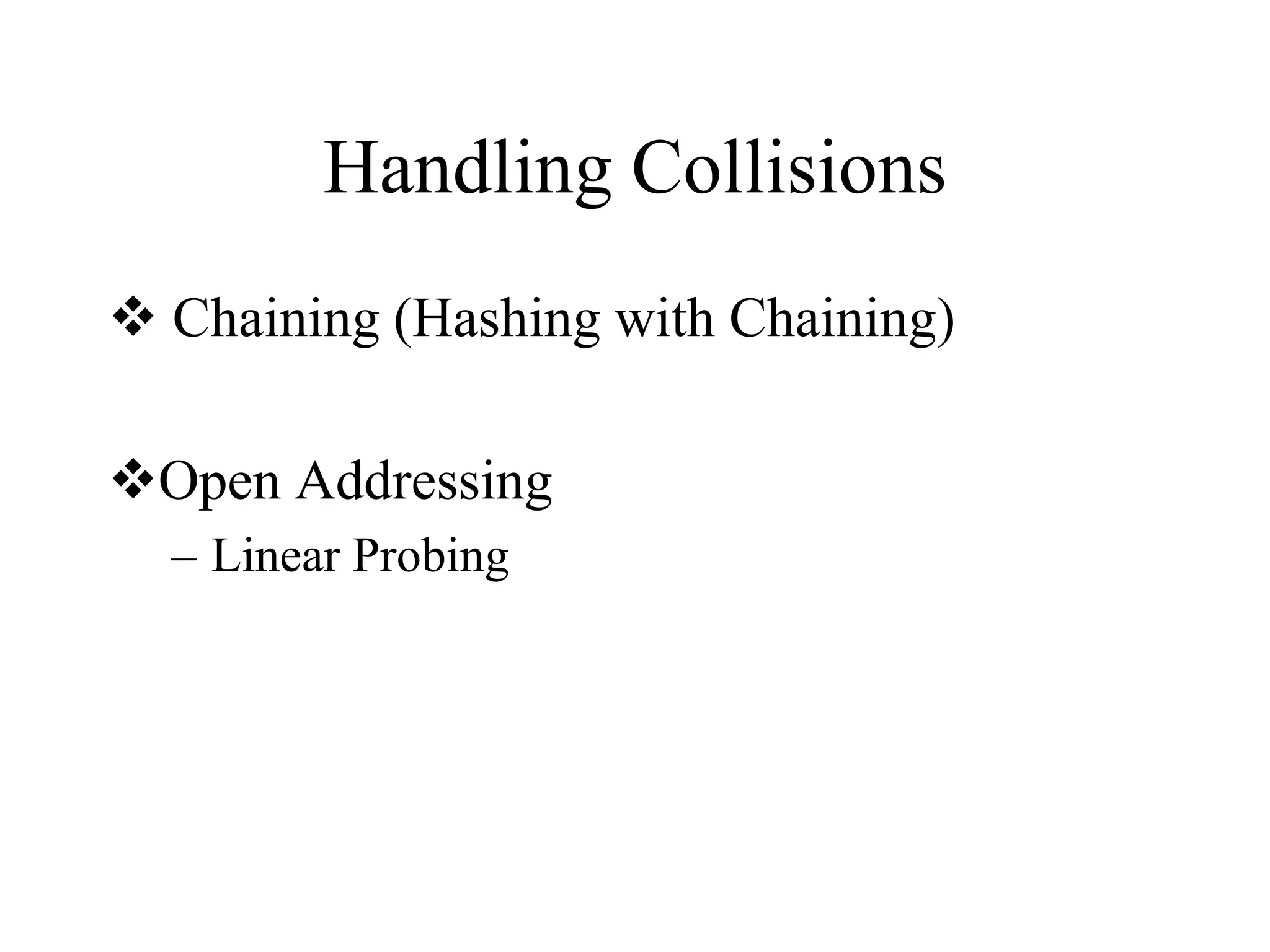
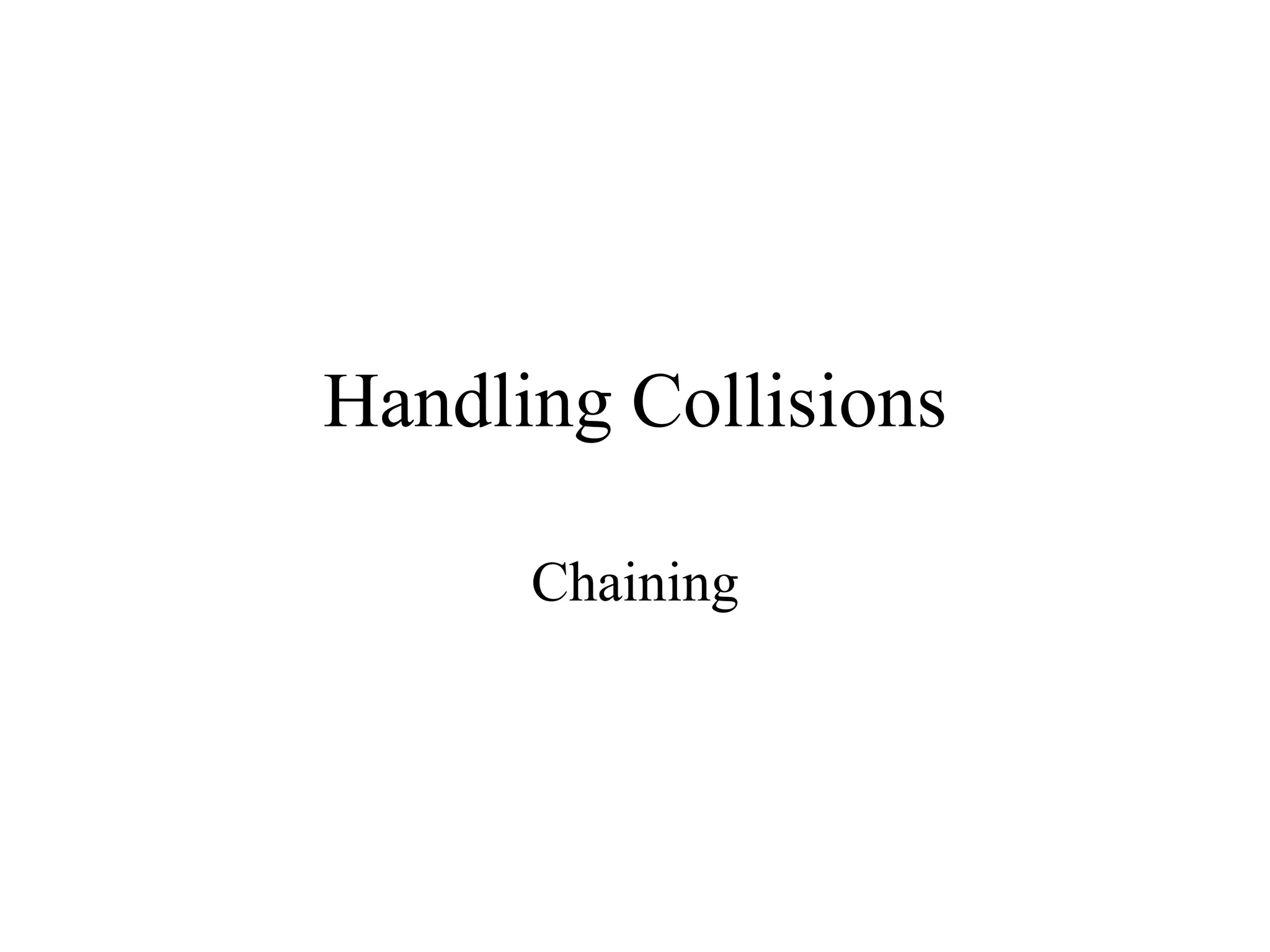
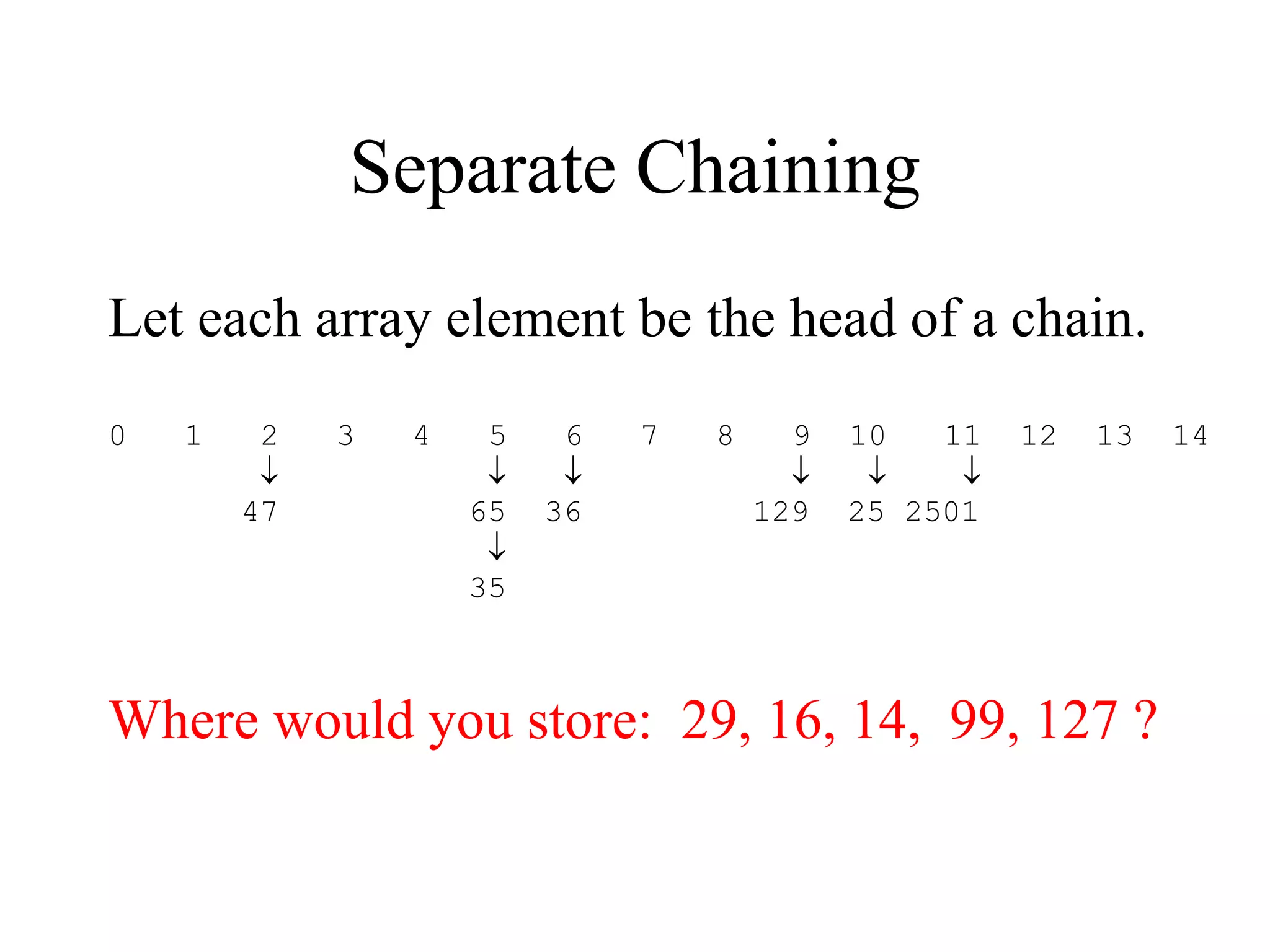
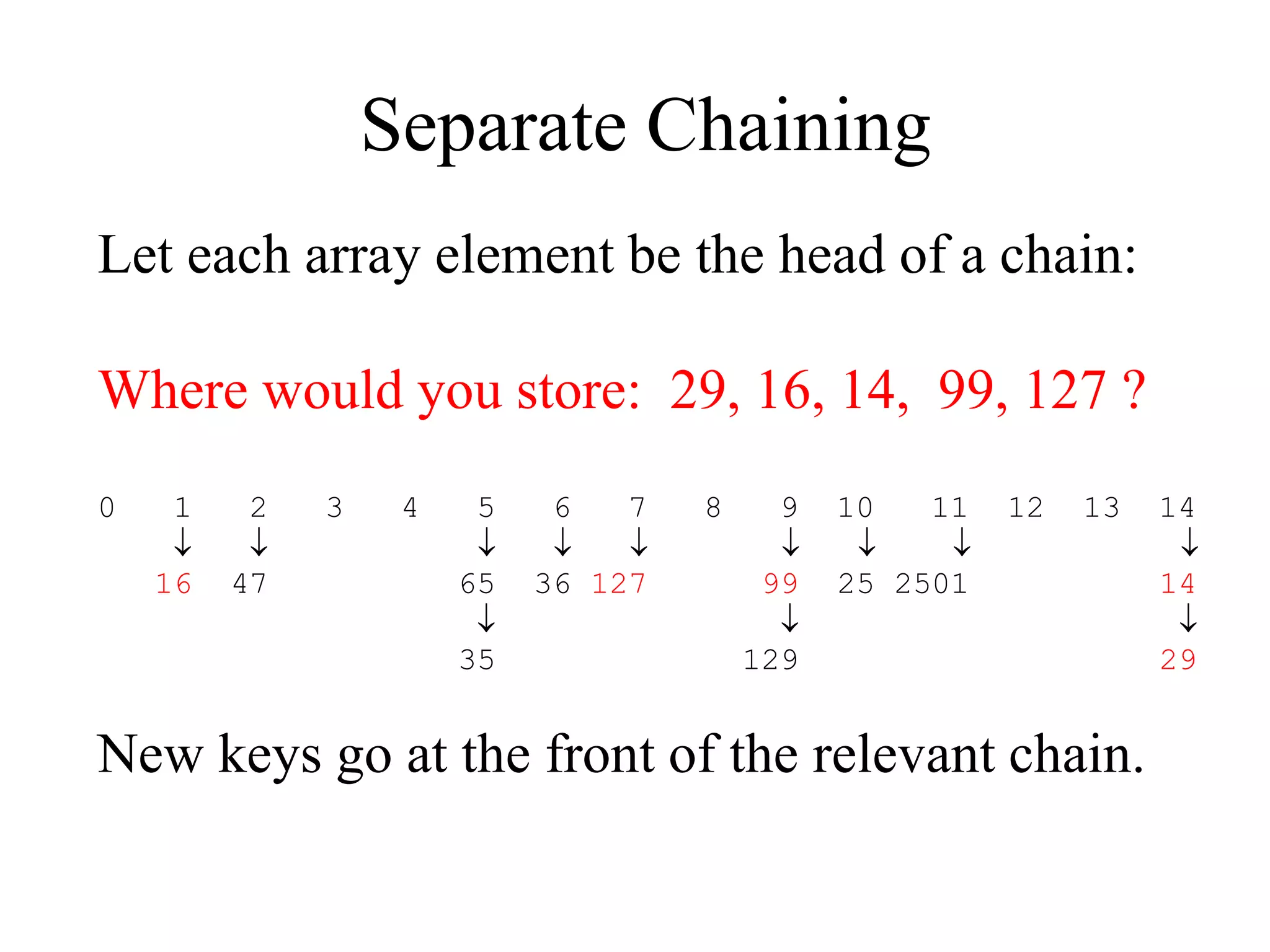
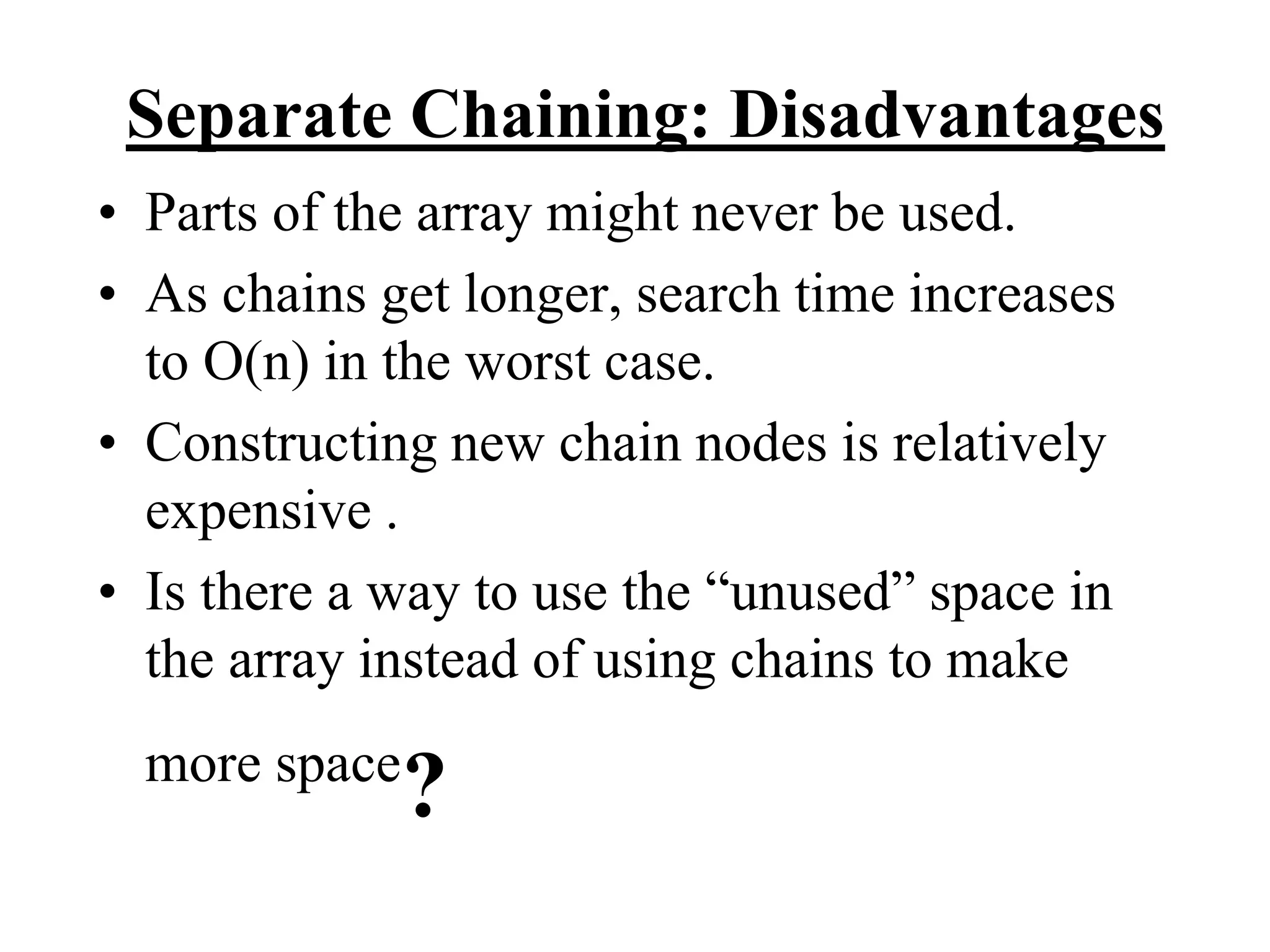
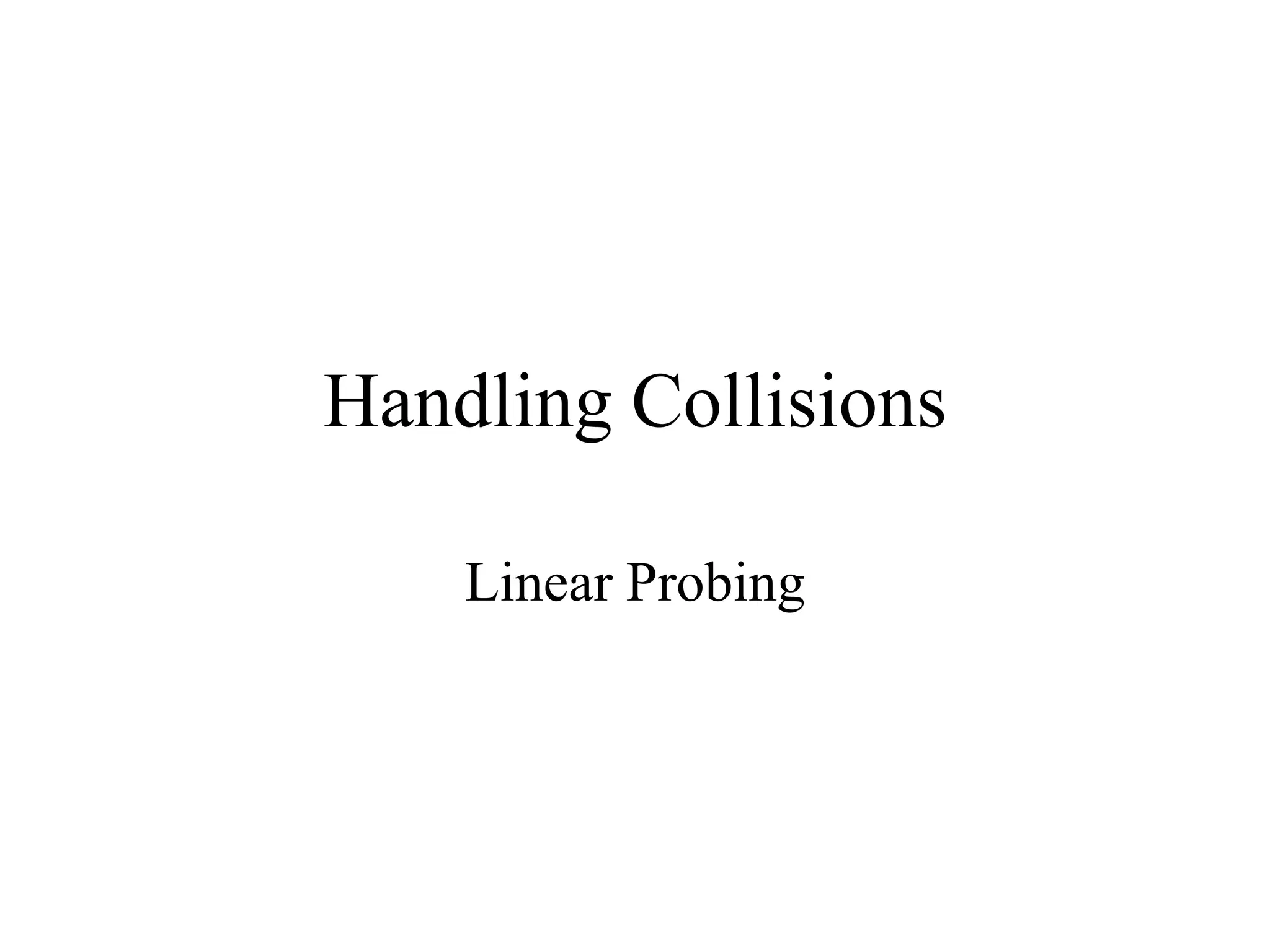
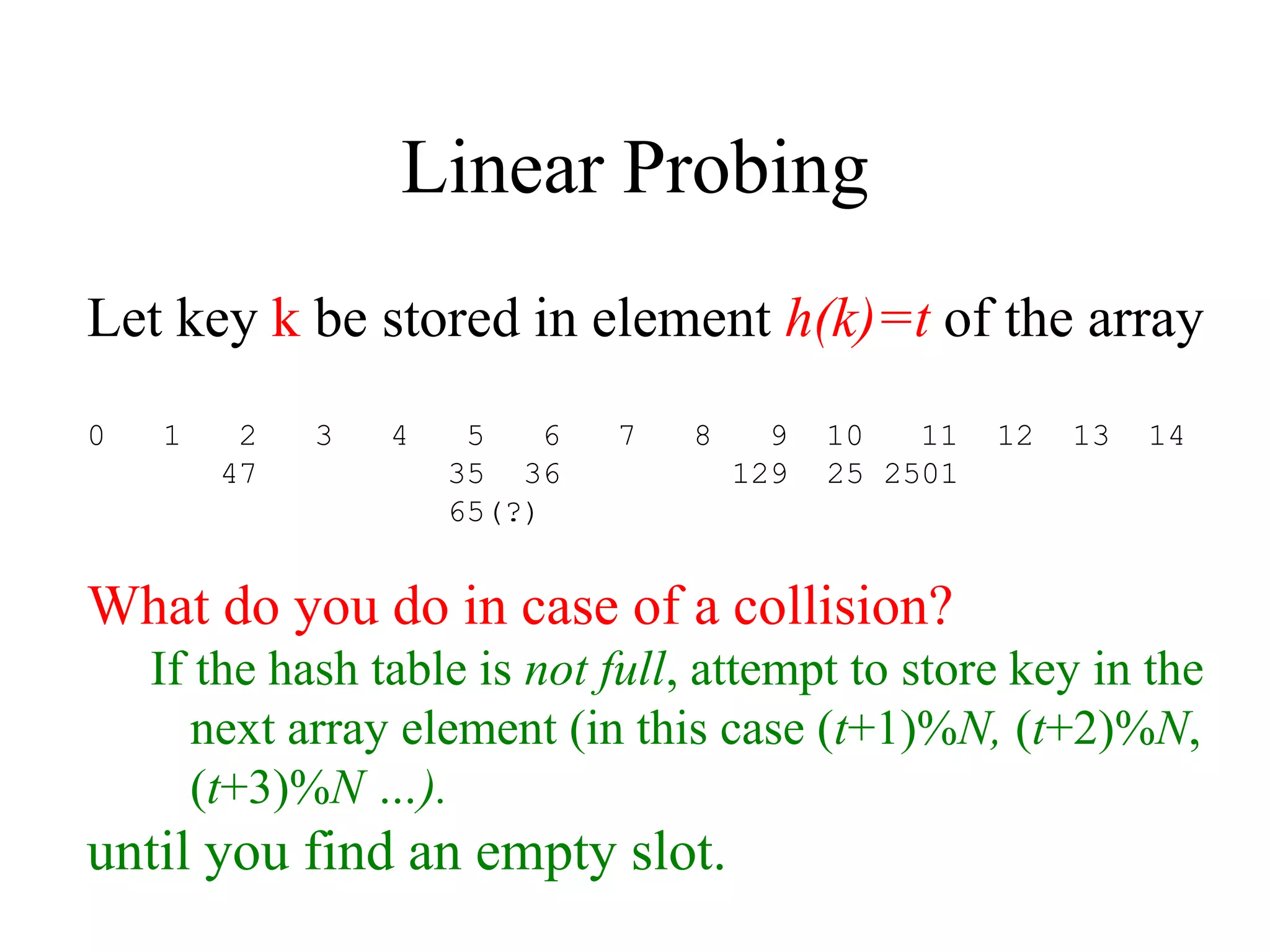
![Linear Probing
Where do you store 65 ? [Here N is 15].
65%15=5
0 1 2 3 4 5 6 7 8 9 10 11 12 13 14
47 35 36 65 129 25 2501
attempts
Where would you store: 29?](https://image.slidesharecdn.com/hashingclass2-141012005734-conversion-gate02/75/Hashing-Techniques-in-Data-Structures-Part2-10-2048.jpg)
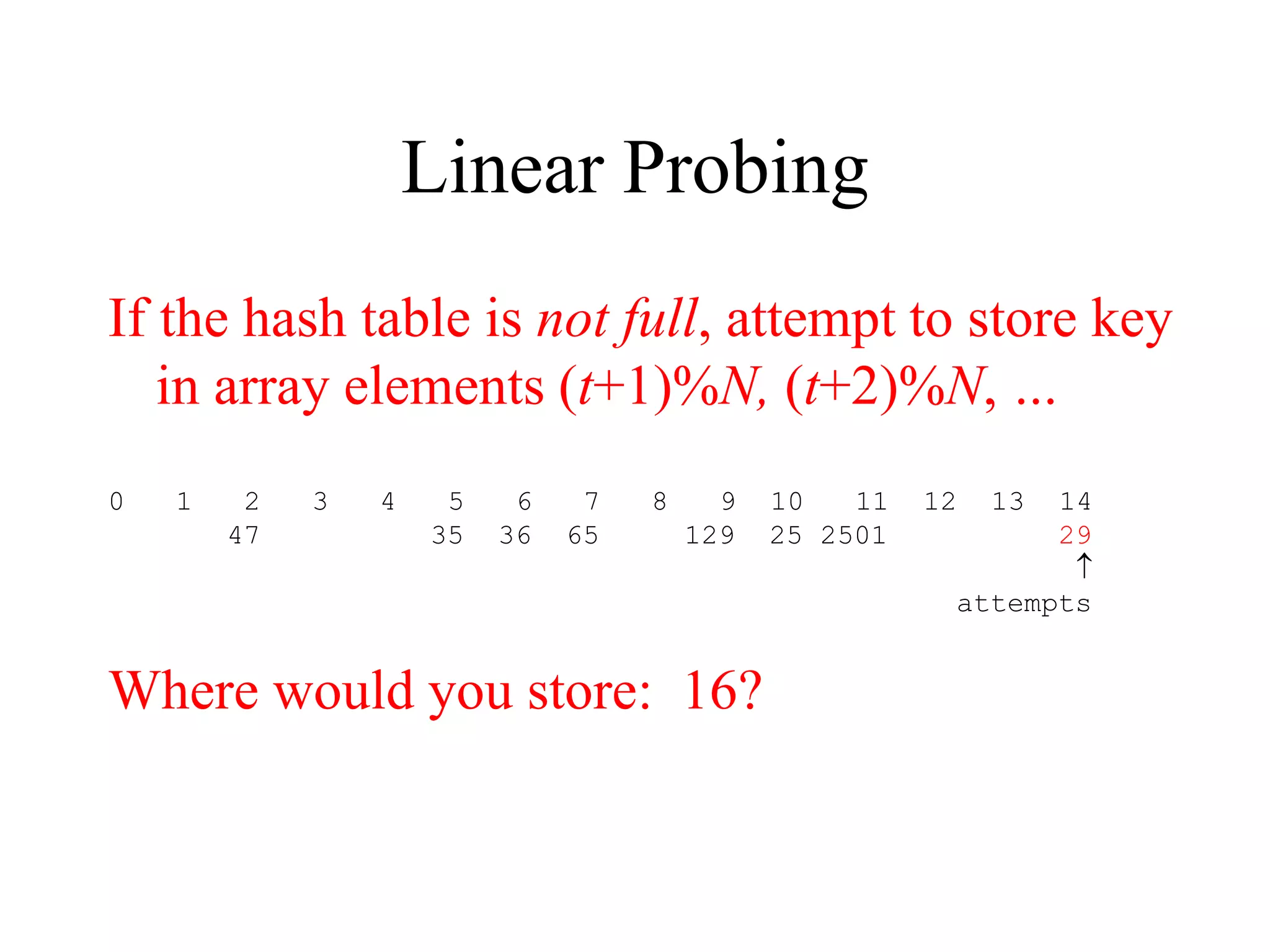
![Linear Probing
If the hash table is not full, attempt to store key
in array elements (t+1)%N, (t+2)%N, …
[16%15=1]
0 1 2 3 4 5 6 7 8 9 10 11 12 13 14
16 47 35 36 65 129 25 2501 29
Where would you store: 14?
[14%15=14]](https://image.slidesharecdn.com/hashingclass2-141012005734-conversion-gate02/75/Hashing-Techniques-in-Data-Structures-Part2-12-2048.jpg)
![Linear Probing
If the hash table is not full, attempt to store key
in array elements (t+1)%N, (t+2)%N, …
[14%15=14]
0 1 2 3 4 5 6 7 8 9 10 11 12 13 14
14 16 47 35 36 65 129 25 2501 29
attempts
Where would you store: 99?](https://image.slidesharecdn.com/hashingclass2-141012005734-conversion-gate02/75/Hashing-Techniques-in-Data-Structures-Part2-13-2048.jpg)
![Linear Probing
If the hash table is not full, attempt to store key
in array elements (t+1)%N, (t+2)%N, …
[99%15=9]
0 1 2 3 4 5 6 7 8 9 10 11 12 13 14
14 16 47 35 36 65 129 25 2501 99 29
attempts
Where would you store: 127 ?](https://image.slidesharecdn.com/hashingclass2-141012005734-conversion-gate02/75/Hashing-Techniques-in-Data-Structures-Part2-14-2048.jpg)
![Linear Probing
If the hash table is not full, attempt to store key
in array elements (t+1)%N, (t+2)%N, …
[127%15=7]
0 1 2 3 4 5 6 7 8 9 10 11 12 13 14
16 47 35 36 65 127 129 25 2501 29 99 14
attempts](https://image.slidesharecdn.com/hashingclass2-141012005734-conversion-gate02/75/Hashing-Techniques-in-Data-Structures-Part2-15-2048.jpg)
